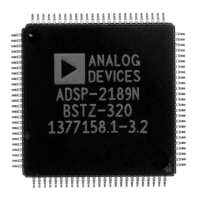instruction 3; {if this is an RTS, RTI, or POP PC … }
then the following restrictions must be observed:
- instruction 2 may not be either the pop/read or push/write TOPPCSTACK instruction.
- If instruction 3 is also the last instruction of a Do Until loop, then instruction 1 may not be the
push/write TOPPCSTACK instruction.
Program Control 3
3-28

